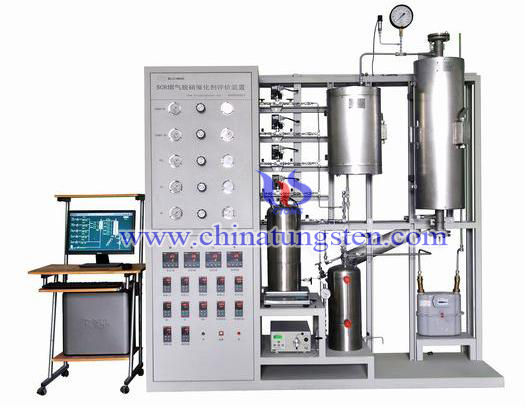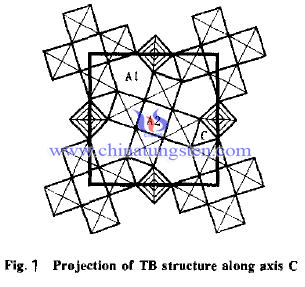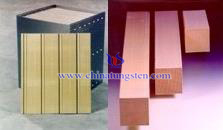The Classifications of EB Tungsten Filament
- Details
- Category: Tungsten Information
- Published on Wednesday, 13 April 2016 18:25
- Written by xuejiao
- Hits: 300
All EB (electron beam) tungsten filaments are made of tungsten which is also known as wolfram. The EB tungsten filament has a good discharge performance and an excellent anti-sag performance. The two characteristic can ensure that the filament is not deformed during working. The following classifications are the main types of EB tungsten filament.
|
Classification |
Specification |
Picture |
|
Mosquito Coil: the shape of the EB tungsten filament is similar to the mosquito coil, therefore, it can be named as Mosquito Coil. And the Mosquito Coil can be divided into the following specifications. |
0.55mm |
|
|
0.65mm |
|
|
|
0.80mm |
|
|
|
Pull-type: Pull-type is also known as the cavity type of Mosquito Coil. |
0.80mm |
|
|
Classification |
Specification |
Picture |
|
U-shaped: this kind of EB tungsten filament is similar to the shape of the letter U. |
0.80mm |
|
|
U-shaped with folding legs: the feet of the EB tungsten filament has a curved. |
0.80mm |
|
|
Half Moon: the shape of this type is the shape of a half moon. |
0.80mm |
|
|
Straight shape |
0.80mm |
|
| Tungsten Metals Supplier: Chinatungsten Online www.tungsten.com.cn | Tel.: 86 592 5129696; Fax: 86 592 5129797;Email:sales@chinatungsten.com |
| Tungsten News & Prices, 3G Version: http://3g.chinatungsten.com | Molybdenum News & Molybdenum Price: http://news.molybdenum.com.cn |
Low-NOx Combustion Unit Uses Tungsten Trioxide SCR Denitration Catalyst
- Details
- Category: Tungsten Information
- Published on Wednesday, 13 April 2016 18:24
- Written by chunyan
- Hits: 240

| Tungsten Oxide Supplier: Chinatungsten Online www.tungsten-oxide.com | Tel.: 86 592 5129696; Fax: 86 592 5129797;Email:sales@chinatungsten.com |
| Tungsten News & Prices, 3G Version: http://3g.chinatungsten.com | Molybdenum News & Molybdenum Price: http://news.molybdenum.com.cn |
Tungsten Bronze (TB) Crystal Structure
- Details
- Category: Tungsten Information
- Published on Wednesday, 13 April 2016 17:58
- Written by xinyi
- Hits: 323

| Tungsten Oxide Supplier: Chinatungsten Online www.tungsten-oxide.com | Tel.: 86 592 5129696; Fax: 86 592 5129797;Email:sales@chinatungsten.com |
| Tungsten News & Prices, 3G Version: http://3g.chinatungsten.com | Molybdenum News & Molybdenum Price: http://news.molybdenum.com.cn |
CaO Effects Designing WO3 Denitration Catalyst
- Details
- Category: Tungsten Information
- Published on Wednesday, 13 April 2016 18:19
- Written by chunyan
- Hits: 250
 Calcium oxide (CaO), the so-called quicklime, is an inorganic compound powder with white, hygroscopic and corrosive. The plaster (Calcium sulfate) in thermal power plant is generated by sulfur dioxide reacting with desulfurization and then oxidized, and then discharged with the flue gas exhaust system. When it comes into being that calcium sulfate contacts with tungsten trioxide SCR denitration catalyst, large number of calcium sulfate will be deposited on the surface of the catalyst, which can cause the catalyst surface shielding, and then the catalyst activity decreased.
Calcium oxide (CaO), the so-called quicklime, is an inorganic compound powder with white, hygroscopic and corrosive. The plaster (Calcium sulfate) in thermal power plant is generated by sulfur dioxide reacting with desulfurization and then oxidized, and then discharged with the flue gas exhaust system. When it comes into being that calcium sulfate contacts with tungsten trioxide SCR denitration catalyst, large number of calcium sulfate will be deposited on the surface of the catalyst, which can cause the catalyst surface shielding, and then the catalyst activity decreased.| Tungsten Oxide Supplier: Chinatungsten Online www.tungsten-oxide.com | Tel.: 86 592 5129696; Fax: 86 592 5129797;Email:sales@chinatungsten.com |
| Tungsten News & Prices, 3G Version: http://3g.chinatungsten.com | Molybdenum News & Molybdenum Price: http://news.molybdenum.com.cn |
Tungsten Carbide Ball for Universal Joint (2/2)
- Details
- Category: Tungsten Information
- Published on Wednesday, 13 April 2016 16:16
- Written by xiaobin
- Hits: 247
Tungsten carbide ball is composed of hard phase WC and binder phase Co. It has higher hardness, strength, excellent wear resistance and chemical stability, which is the ideal material for universal joint. In the arc type universal joint, the active fork ball and do some carbide groove driven fork mounted four synthetic carbide ball raceway can accommodate four carbide balls. Besides, there is a spherical ball mounted in the center of the groove as centering ball. Straight groove raceway-type universal joint in the two fork ball with carbide straight grooves, straight grooves and each axis is inclined relative to the center line and the same tilt angle and symmetrical to each other. Built in the raceway between the two fork ball has four tungsten carbide balls.
Velocity joint cage can be divided into stationary and scalability ball basket universal joints according to the movement of the universal joint axial direction. Viewed from the structure, fixed cage universal joints are composed of spline, star sets, curved groove. Star spherical shell fitted jacket and synthesized six races, each mounted in each race a carbide ball and keep cage carbide ball inside in the same plane. It powered by a drive shaft through a spherical shell and tungsten carbide ball. The structural feature of scalability ball basket universal joints is the inner wall of the cylindrical shell of the star and the external cylindrical sleeve made straight slot, built-in two raceways fitted together after the formation of cemented carbide ball. Star set bore splined for connection with the input shaft, which allows relative movement of the tubular sleeve in the axial direction. Overall, due to high hardness, high strength, wear and corrosive resistance, tungsten carbide ball has a broad application prospect in universal joints.
| Tungsten Carbide Supplier: Chinatungsten Online tungsten-carbide.com.cn | Tel.: 86 592 5129696; Fax: 86 592 5129797;Email:sales@chinatungsten.com |
| Tungsten News&Tungsten Prices, 3G Version: http://3g.chinatungsten.com | Molybdenum News & Molybdenum Price: http://news.molybdenum.com.cn |













 sales@chinatungsten.com
sales@chinatungsten.com